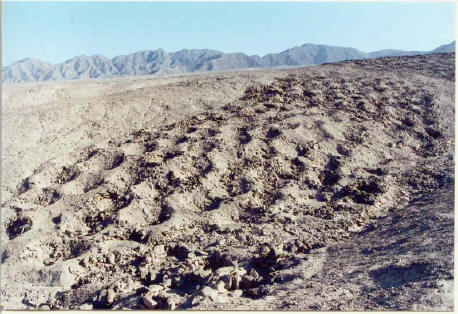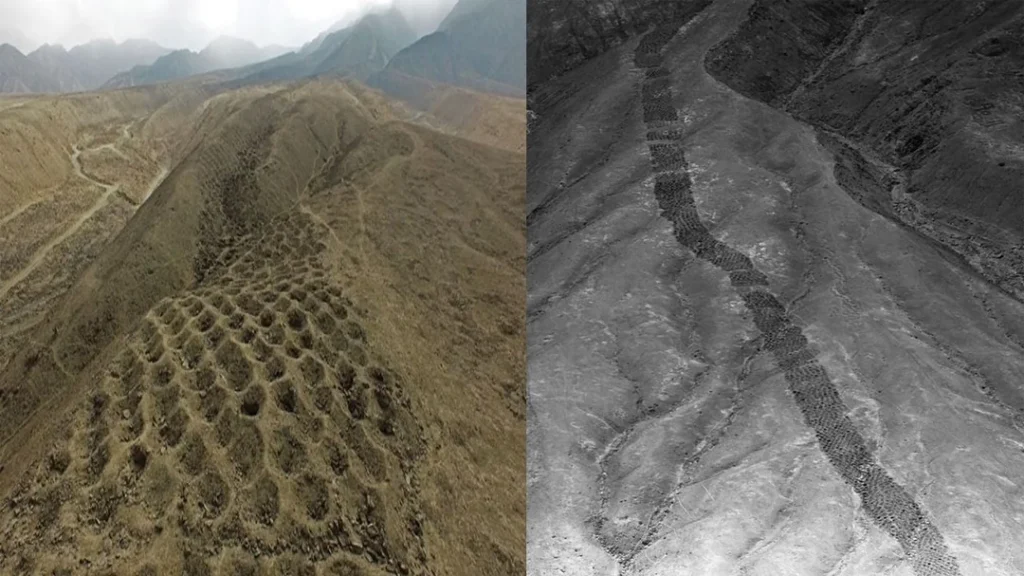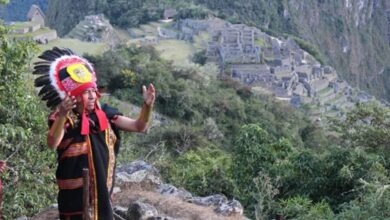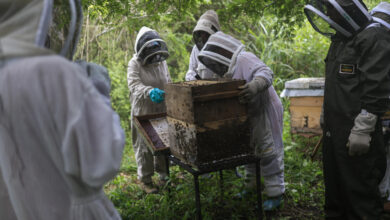The Band Of Holes: How A Peruvian Mystery Became an Inca Ledger of Life

For nearly a century, the Band of Holes has baffled archaeologists and fueled myths of aliens and lost civilizations. Now, a new peer-reviewed study and reporting from National Geographic suggest something far more human—an ancient market that became the Inca’s open-air accounting book.
From Serpent Mountain To Marketplace
High above Peru’s Pisco Valley, a strange formation cuts across the arid hillside—a mile-long line of more than 5,000 shallow pits, each carved with precision, each identical in shape. From the air, the pattern ripples like the scales of a sleeping serpent. Locals call it Monte Sierpe—Serpent Mountain. Archaeologists, a bit less poetically, know it as the Band of Holes.
When American archaeologist Charles Stanish first flew a drone over the ridge nearly a decade ago, he was stunned. “I’d never seen anything like it,” he told National Geographic, which first captured the world’s imagination with aerial photographs of the site back in 1933. Ever since, the Band of Holes has been a magnet for wild theories—Atlantis outposts, alien runways, secret ports for prehistoric merchants.
The truth, it turns out, may be even more astonishing for its humility. According to a new study published in Antiquity, the Band of Holes was not the handiwork of cosmic visitors, but of human hands running an earthly enterprise—a bustling marketplace later repurposed by the Inca Empire as a public tribute ledger.
The new theory doesn’t just rewrite one of Peru’s strangest mysteries—it reimagines how Andean societies recorded value, exchange, and obligation long before Europeans arrived with ink and paper.
Counting The Past: Microbotany, Drones, And A Thousand-Year Ledger
The breakthrough came from a mix of old dirt and new tech. Stanish, now at the University of South Florida, and his team gathered microbotanical samples from the pits—tiny plant residues invisible to the naked eye. What they found changed everything: traces of maize and wild fibers once used to weave baskets.
Those microscopic remnants, the researchers argue, suggest that people lined the holes with plant material and placed goods inside—grain, textiles, coca leaves—before hauling them away in woven baskets. “People could have been using these holes to publicly display information about goods available and goods required,” lead author Jacob Bongers of the University of Sydney told National Geographic. “A certain number of holes containing maize might have represented an equivalent number of holes filled with cotton or coca. It’s a visible, physical way to manage exchange.”
Drone surveys added another clue. From above, the Band of Holes resolves into about sixty repeating blocks, each separated by untouched earth. Within these blocks, the holes line up in geometric perfection: nine rows of eight, six rows of seven, then another with a total of fifty. The patterning was too deliberate, too mathematical, to be random.
That rhythm—a choreography of sevens and eights—mirrors Andean counting systems. The site dates to roughly a thousand years ago, likely built by the Chincha, a coastal civilization later absorbed by the Inca Empire around the fifteenth century. The Chincha were traders and navigators who ferried obsidian, textiles, and food along Peru’s valleys. Monte Sierpe, perched between the coast and the highlands, sits right on their trade route.
“This is a zone where different ethnic groups would have come together,” said archaeologist Jordan Dalton of SUNY Oswego, who has worked in the area. “It makes perfect sense that such a place could serve as a marketplace or a counting ground,” she told National Geographic.
Over centuries, as the Inca expanded their reach, Monte Sierpe may have evolved from a market of exchange into a state-supervised system of tribute—a stone spreadsheet for the empire’s economy.

A Landscape Khipu And The Politics Of Tribute
The Inca were masters of turning local customs into imperial infrastructure. Where communities once bartered, the empire levied tribute. Where people once traded freely, officials took count. At Monte Sierpe, that process may have left its mark on the land itself.
The new study suggests the Band of Holes functioned as a “landscape khipu”—a vast, earthen version of the khipus, bundles of knotted cords the Andeans used to record everything from harvests to taxes. One khipu found nearby even encodes numeric sequences that echo Monte Sierpe’s alternating patterns of seven and eight.
“It’s a giant ledger inscribed in the earth,” Bongers explained. “Each hole could correspond to a count—goods owed, goods paid, or goods stored. In that sense, it’s both economic and symbolic.”
The idea reframes the Band of Holes not as a mystery but as a monument to bureaucracy—the place where reciprocity met recordkeeping, and where imperial oversight replaced communal exchange. Public counting was political theater: villagers depositing maize or cotton could see their neighbors’ contributions and know their own obligations. What began as a local market of fairness may have become a public display of compliance.
And yet, even in that transformation lies the ingenuity of the Andes. “The Inca were refiners, not inventors,” Stanish told National Geographic. “They could take a local idea and scale it to empire.” The Band of Holes shows that genius at work—how an ancient community’s system for sharing could be recast as an empire’s tool for control.
Why Solving The Mystery Matters
Debunking alien fantasies is satisfying. But what makes the Band of Holes extraordinary is not the rejection of myth—it’s the restoration of memory. It gives credit back to the Andean engineers and traders who mastered the art of counting, cataloging, and cooperation long before any European quill scratched parchment.
Bongers says the site represents “how people modified landscapes to bring communities together.” It was less a riddle than a ritual: a mile of small gestures—placing a basket, trading maize for cotton, settling debts under the desert sun. “With every new discovery,” Stanish added, “the Band of Holes becomes more human, not less mysterious.”
The next phase of research will trace the origins of the plant residues—some may be medicinal—and refine the timeline to separate Chincha innovation from Inca appropriation. But already, the implications ripple across archaeology: that information systems don’t always require writing, and that economies can leave fingerprints in soil as surely as ink on stone.
Too often, Andean civilization is remembered for its spectacle—the terraces, the fortresses, the roads to the clouds. Yet the real marvel lies in its invisible infrastructure: the logic of knots, the order of storehouses, the mathematics of maize. Monte Sierpe belongs in that lineage. It turns a barren slope into a communal abacus—an accounting system you can walk across.
A thousand years later, the pits still catch the light like shallow stars scattered on the mountainside. They no longer hold baskets or tribute, but they hold meaning—a record not of conquest or aliens, but of ordinary people making sense of value, trust, and one another.
The Band of Holes was never a message to the heavens. It was a conversation among humans—written in earth, counted in maize, and remembered in stone.
Also Read: Teotihuacan’s Whisper: Can a Reconstructed Tongue Finally Unlock the City of Gods?





